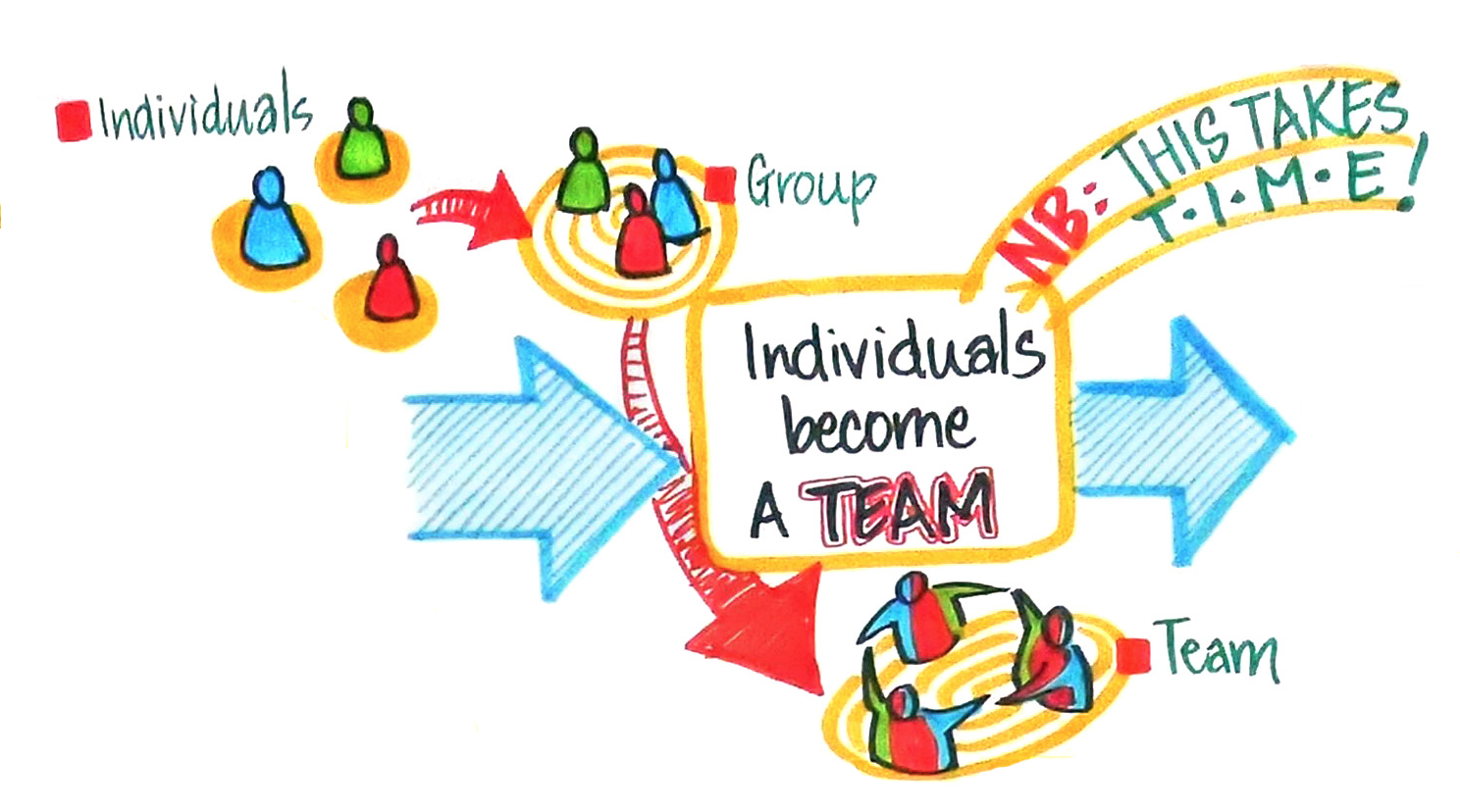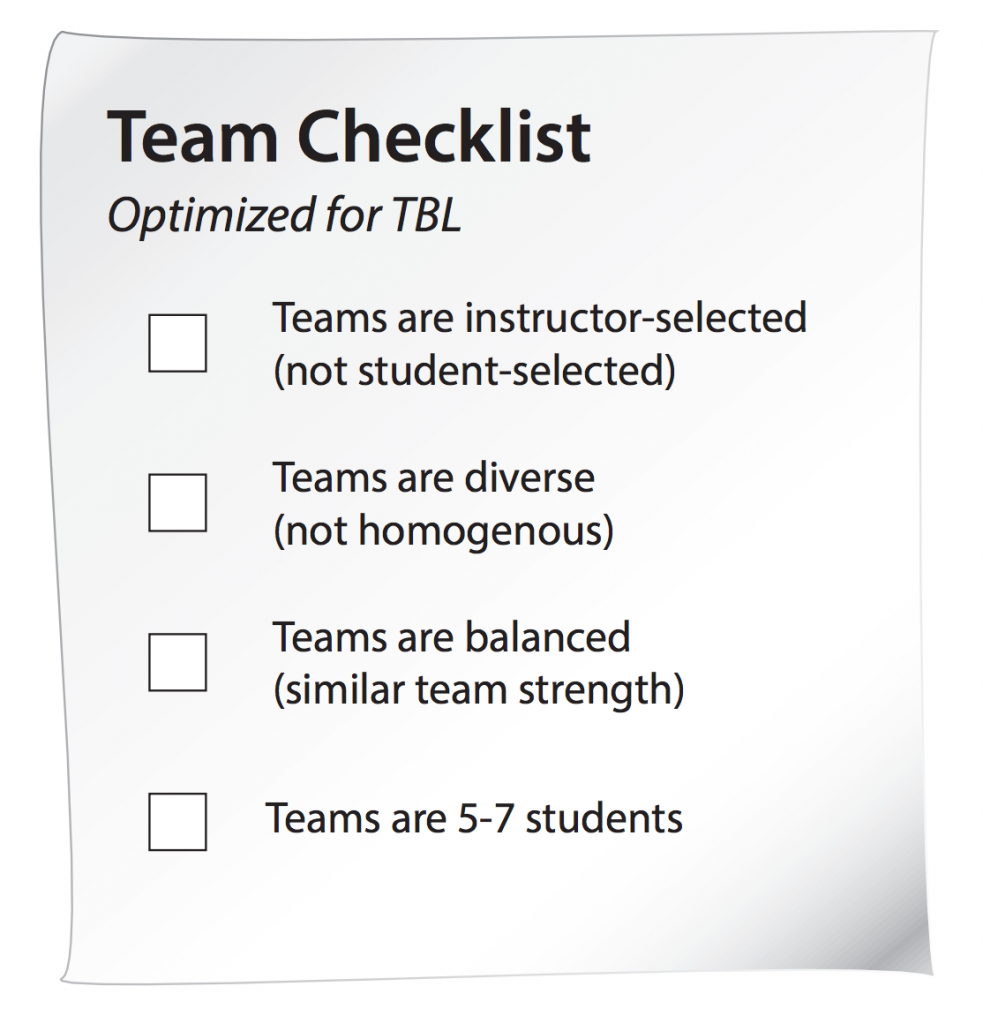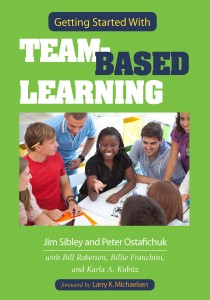Using Teams Properly
No Need to Manage Teams
A remarkable aspect of TBL is that teams often don’t need to be managed at all. Unlike other forms of group learning, lecturing on group dynamics and assigning specific roles to team members is simply unnecessary. The combination of thoughtfully-created teams and the focus on decision-making activities eliminates the need for any kind of team management. This is because shared activities and goals, the sequence of TBL activities, and accountability to one’s team all synergistically aid in the development of team cohesion. There was a remarkable study that highlights the amazingly rapid development of team cohesion in TBL (Michaelsen, Watson, & Black, 1989). The study found that in early Readiness Assurance testing, student teams often used simple votes on split decisions and let the majority rule. But as team members found their social feet within the team and team cohesion began to increase with each testing cycle, the decision-making process progressively switched to a more consensus-based decision-making process. It showed that in as few as four Readiness Assurance cycles, teams had switched strategy from majority rules to consensus-based decision-making. For more on this check out my page on Team skills: Why we don’t have to teach them.
From the wonderful work of Avril Orloff
Contact her at outsidethelines.ca
TBL teams need to be large
Teams should be five to seven students. TBL teams need to be big enough to intellectual horsepower have the solve the wonderful, complex, messy, real-world problems that are at the heart of every TBL course experience. TBL teams need to be larger than is suggested in most cooperative or collaborative learning literature because of the complexity of the problems.
The recommended five-to-seven student size may be contrary to your intuition and experience. But again and again, new TBL teachers who try smaller team sizes are often disappointed with the results. TBL has structures and processes that effectively manage student teaming behaviours and control “social loafing”. Every individual has accountability to the teacher for their preparation (iRAT), and every individual has accountability to their teammates for the quality of their contribution to their team’s success (tRAT and peer evaluation). Peer evaluation lets us give the grading scheme the teeth to motivate every student to contribute and be fairly rewarded (or penalized) for their level of contribution to their team.
TBL teams should be teacher-created
Use teacher-created, criterion-based team formation to ensure the best educational results. Teacher-formed teams have been shown to outperform randomly and student selected teams (Brickell, Porter, Reynolds, & Cosgrovel, 1994). To get these balanced and diverse teams, the instructor always form the teams for the students. Student-selected teams are a very bad idea. For more on guidance on how to say no….check out Saying No to Self-Selection. The educational literature is very clear about the importance of not letting students create their own teams (Brickell et al 1994). Student-selected teams consistently underperform other team formation strategies. We paraphrased from Brickell et al (1994) in the opening chapter of the new TBL book , but it is worth repeating here, student-selected teams are often “social entities” where existing relationships and cliques can make team cohesion difficult.
TBL teams need to be diverse
We want to have maximum diversity in our teams to ensure that a wide range of skills, opinions, and personal experiences can come into play during team deliberations. This is great news, since increased enrollment of under-represented groups and the recruitment of large numbers of international students are increasing diversity in our classrooms year after year. TBL actually gets better with more diverse teams, especially if we craft our activities to leverage that diversity. Student-selected teams are often very homogenous and this can easily lead to “group think” behaviors, since teammates on a student-selected team are often very similar in cultural, educational, and life experiences. These student-selected teams may not have the diverse range of talent and experiences they need to be successful with those messy TBL problems.
TBL teams need to be balanced
The whole range of student strengths and weaknesses must be fairly distributed across all teams in your course. Does every team need to have a member with prior work experience, someone who has lived overseas, or someone with a previous degree? Whatever important student assets and liabilities you can identify should be distributed to create balanced teams.
TBL teams need to be permanent
TBL teachers often talk of initially underestimating teams’ abilities to solve difficult problems, and needing to ratchet up the problem difficulty as the semester progresses. This is because the teams naturally, with time and practice, get better at problem-solving together. To let the teams “gel”, the members must work together consistently. To allow this to happen, teams must be permanent for the duration of the course. This “gelling” process, known as team cohesion in the literature, can be seen in the classroom. With time, groups of students can become high-performance learning teams as the “social” overhead of interacting decreases and task focused energy increases.
Something cool Larry just noticed
There is a subtle, but extraordinary feedback and accountability process as part of the whole class report and discussion…..If your team didn’t listen to an important internal minority opinion or a majority of team members were bullied by a dominating member into a choice, these poor choices often come to light during the whole class reporting discussion. The team members will understand that they committed an error in listening and team process. This self-correcting feedback can automatically improve the team dynamics in subsequent activities.
References
Brickell, J. L., Porter, D. B., Reynolds, M. F., & Cosgrove, R. D., (1994). Assigning Students to Groups for Engineering Design Projects: A Comparison of Five Methods. Journal of Engineering Education, 7, 259-262.
Michaelsen, L. K., Watson, W. E., & Black, R. H. (1989). A Realistic Test of Individual Versus Group Consensus Decision Making. Journal of Applied Psychology, 74(5), 834-839.
Excerpted and adapted from a chapter on Using Teams Effectively in Getting Started with Team-Based Learning by Jim Sibley and Pete Ostafichuk published by Stylus, Sterling, VA
Buy the book from Stylus Publishing Buy the book from Amazon


